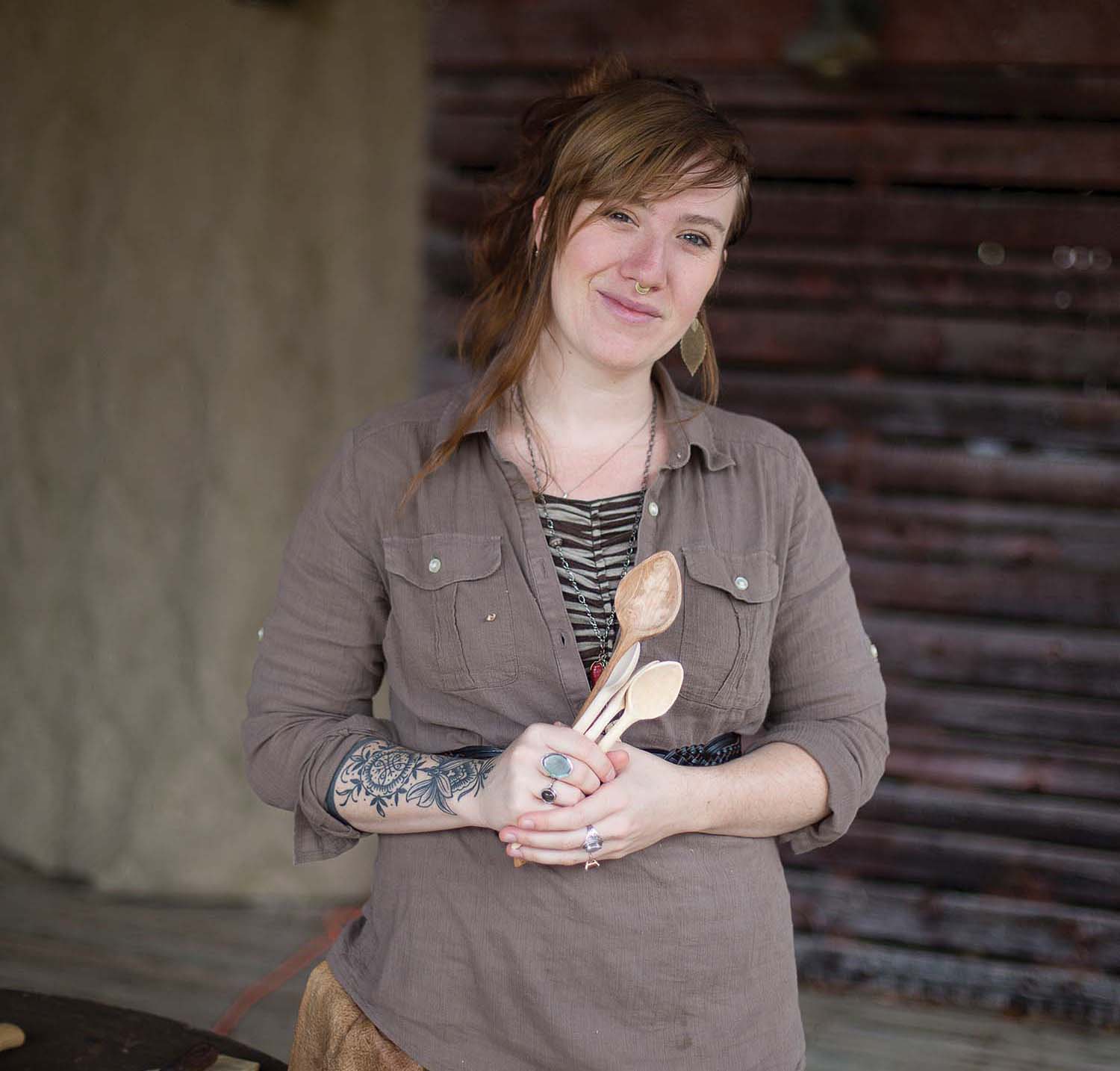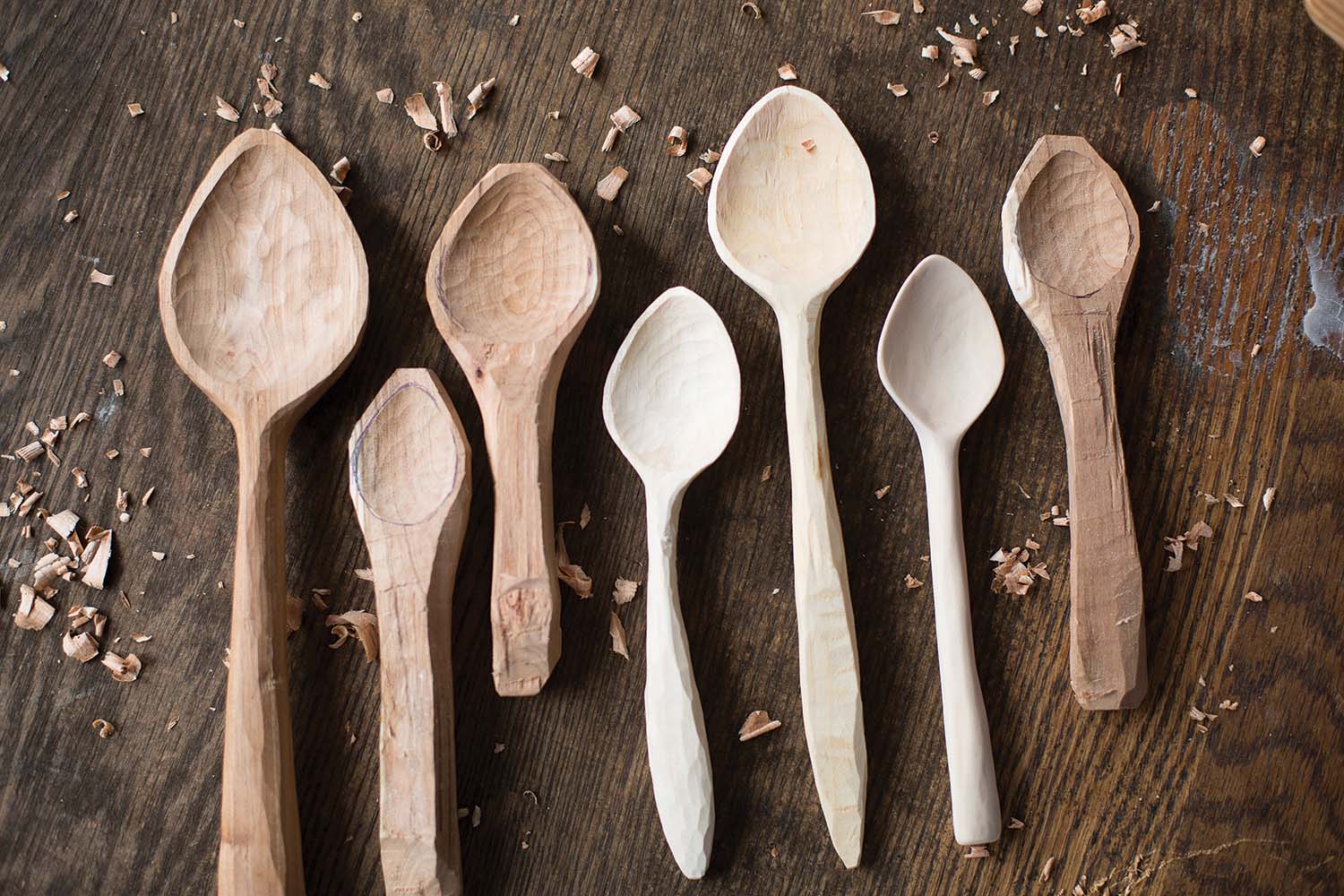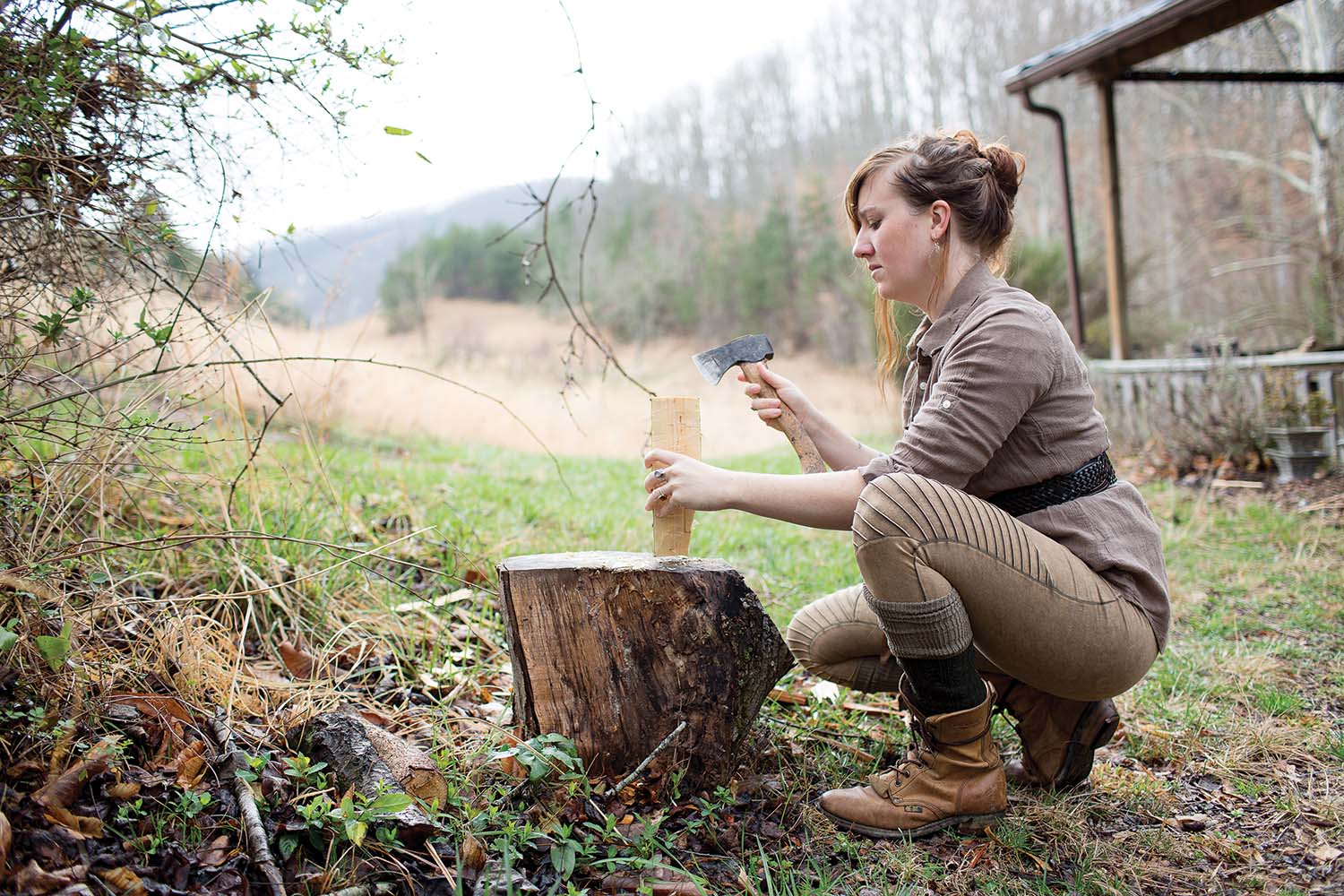
He won her heart with an apple tree. “People bring me wood all the time,” says Becky Beyer of Barnardsville. “That’s how my boyfriend wooed me: he put a whole tree in his car.”
Then the spoon maker spent the next 18 months whittling down her beau’s arboreal offering. As one could imagine, a Honda Accord full of hardwood can make myriad utensils, especially the kind designed for scooping granola or ladling tomato bisque. But Beyer also procures her own materials, tromping through hardwood forests to harvest cherry limbs or pecan boughs.
She rarely chops down more than a small feeder branch, though. Because in spoon making, less is more. “Put your pointer finger and thumb together to form a circle,” Beyer demonstrates. “That’s all the wood you need.”
After selecting the specimen, she uses a hatchet to halve it. The ends are then squared and a bowl shape is gouged. To finish, the piece is sanded and sealed with coconut oil. The process is “terribly simple,” says Beyer. She estimates that a “personal eater” takes four hours to make, and larger cooking spoons a few days. No power tools are necessary.
“Green wood cuts like butter,” she says. Drier wood calls for more love; it’s harder, but still workable.

Raised in a nomadic household — she insists she “really isn’t from anywhere” — Beyer moved to the Blue Ridge “hungry for connection.” As a transplant, she explored folklore and timeworn ballads, fought against King Coal, and swooned over the region’s biodiversity. She also bumped elbows with movers and shakers of the homesteading realm, falling hard when Yancey County’s Barron Brown taught her to whittle in 2011. Spoon making appeared as a natural offshoot, embodying the classic Appalachian marriage of beauty and pragmatism.

“It’s an Early American tradition,” Beyer says. “In Western North Carolina, spoon making came to rise in the colonial days when several cultures — Scotch-Irish, West African, Native American — melded together to influence wood carving.”
In Europe, the history of spoon making is much older, dating back to the Middle Ages. Despite imbuing modern minimalism, Beyer crafts her designs to reflect this rich past. As opposed to more circular patterns, her egg-shaped bowls nod to pewter spoons popularized in the 1700s. Often crude and plain, these relics were more tool than art. Though Beyer adopts a similar functionalism, she uses robust detail to distinguish new from old.
Her latest commission, for instance, is a Lovespoon: a decoratively carved piece meant to show romantic intent. With floral etchings and a delicate handle, a Lovespoon is like the 18th-century Welsh version of an apple tree — sending a sweet message, but with no heavy lifting required.
Becky Beyer, Blood and Spicebush: Appalachian Folk Ways and Witchery, Barnardsville. Beyer will host a workshop, “Spoon Carving the Greenwood Way,” on Sunday, April 22, at The Hawk & Hawthorne in Barnardsville (133 North Fork Road) from 11am-2pm. $30-$60, sliding scale. For more information, visit bloodandspicebush.com.
I would very much like to learn your method of spoon carving..please instruct…I am a grandmother on a dairy farm in East Tennessee..I have been practicing…limited success..need a class..thank you..peggy